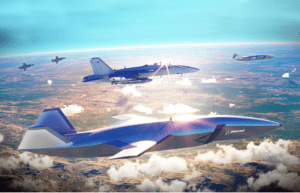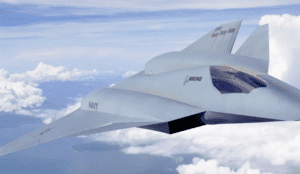he US is aiming to reclaim its air dominance through the implementation of Artificial Intelligence (AI) and unmanned aerial vehicles (UAVs) in sixth-generation fighters. AI in Sixth-Generation Fighters The United States Air Force and Navy are currently developing sixth-generation fighters to sustain their superiority. The Navy has requested over $1.5 billion to develop its F/A-XX sixth-generation fighter to replace the F/A-18E/F Super Hornets fleet. The F/A-XX is planned to be the future “quarterback” of the Navy in both manned and unmanned operations on aircraft carriers.

With the emergence and advancement of UAVs, the military’s adoption of autonomous aircraft has grown. The Chief of Naval Operations’ Air Warfare Division Director foresees a 60-40 ratio of unmanned to manned aircraft in the future. US and its Unmanned Fighters Employing AI fighters instead of human pilots may be cost-efficient and reduce human losses. However, deploying these fighters in actual combat remains untested, which poses a potential threat to the United States in its efforts to outpace its adversaries.

The MQ-25 Stingray is the face of the new unmanned aerial system, developed by the Navy in 2006 for intelligence, reconnaissance, and surveillance missions. The Stingray is expected to achieve operational capability by 2025 and deploy to aircraft carriers by 2026. With a range of 500 nautical miles and the ability to carry 15,000 pounds of fuel, the Stingray will have a 300-mile advantage over the Super Hornet and support aerial refueling missions for other aircraft.

MQ-25 Stingray’s Effect on Naval Aviation The Stingray has demonstrated its abilities in several critical operations aboard the USS George HW Bush aircraft carrier, such as resupplying friendly airframes and manned-unmanned team testing. Although it has yet to land or take off from an aircraft carrier, it is predicted to have a significant impact on naval aviation. Navy Rear Admiral Andrew Loiselle informed The Drive that the Air Force and Navy have made substantial progress in collaborating on the development of sixth-generation stealthy manned fighter jets and UAVs, changing the composition of attack groups from aircraft carriers and their air wings.

The range and weaponry capacity of the platform are critical to the efficacy of carrier strike groups. The extended range and higher capacity of the weaponry would allow for more secure and efficient navigation through contested spaces. The future of the US air fleets will be largely influenced by the deployment of AI fighters and UAVs, altering the way military operations are executed. Conclusion The US is committed to implementing AI and UAVs in sixth-generation fighters to restore air superiority and revolutionize the range, weaponry, and combat effectiveness of military operations.